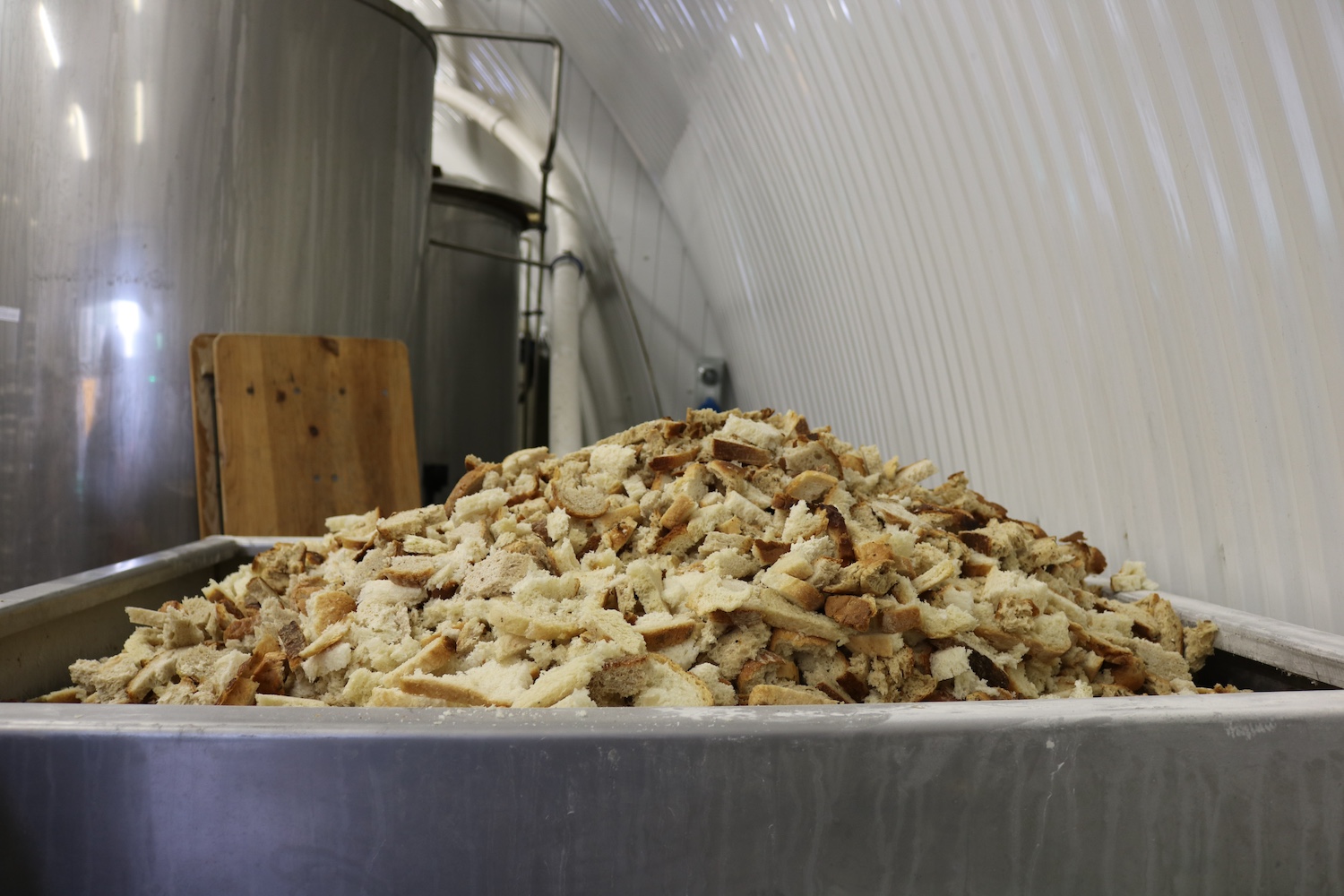Drink Up for the Planet: How Spirits, Beer and Wine are Going Green


The British company Toast Brewing replaces some of the malted barley used to brew its beers with surplus bread. (Image courtesy of Toast Brewing.)
This story about sustainable spirits, wines and beer is part of Entertainment Month in TriplePundit's Sustainable Living Challenge, where we unpack simple ways to save money and reduce environmental impact in the ways we have fun. Learn more and take the challenge here.
With the days lengthening and temperatures rising, it’s time to crack out the mojitos, sangria and shandies. Our favorite beverages are a cherished staple of summertime BBQs, but their environmental impact remains real. The spirits, wine and beer industries consume large amounts of water and energy, emit greenhouse gases, and create wastewater and pollution.
Fortunately, sustainability initiatives are hotter than a spicy margarita in the alcoholic drink market. Companies are reducing their environmental footprint in novel ways while still brewing, distilling and fermenting delicious products. You can’t solve all the world’s problems with an Aperol Spritz, but at least your happy hour can be eco-guilt free.
Organic ales, cabs and tequila
You’re likely aware that organic food has numerous environmental benefits, such as reducing pollution and soil erosion, conserving water, using less energy, and emitting fewer greenhouse gases. But can booze also be organic? If you’ve been down the wine aisle recently, the answer is yes!
While organic alcohol is a niche market — organic wine is just 3 percent of the total sales globally — it’s rapidly growing. The organic wine market is predicted to increase by 10 percent annually until 2030, while organic beer and spirits are also gaining popularity.
Take, for example, the trailblazing Frey Vineyards in California. Producing organic and sulfite-free wines since the 1980s, it was the first organic and biodynamic vineyard in the U.S. Both organic and biodynamic refer to wines produced without synthetic fertilizers or pesticides. However, biodynamic wines can contain more added sulfites, a preservative, than their USDA-certified counterparts.
But that’s just the tip of the vineyard. Wine Country Getaways maintains a list of California organic vineyards, and Demeter, a certification organization, has a list of global biodynamic wineries.
On the lager and ale side of things, the availability of organic ingredients, particularly barley, can be a roadblock for brewers. Nonetheless, organic breweries are on the rise. Wisconsin’s Lakefront Brewery was the first certified organic brewery in 1996, but it’s in good company now. Peak Brewery in Maine has brewed up organic sour ales, IPAs and pilsners since 2007, along with hard seltzers and teas. Leashless Brewery, found along the Southern California coast, aims to promote an organic lifestyle through beer. Its sustainable creations include Belgian-style beers, IPAs and seltzers.

Across the pond, the centuries-old Pinkus Muller has brewed organic German beer since the early 1990s, while the Belgian brewery Brunehaut uses locally sourced, organic barley and produces 70 percent of its electricity with solar panels. And there are many more. Untapped provides a list of organic breweries and beers, and Craft Beer and Brewing also reviews organic beers.
Last but not least, spirits have also jumped on the organic bandwagon. For example, Square One Organic Spirits in Virginia makes organic vodka, mixers and ready-to-drink cocktails, while the Midwestern Prairie Organic Spirits and Hawaiian Ocean Organic Farm & Distillery produce a variety of organic spirits from rum, vodka and gin. You can even find organic amaro, liqueurs and bitters at Greenbar Distillery in Los Angeles, California. And the Mexican company 123 Tequila offers organic tequila in recycled bottles.

Upcycling food waste for booze
Organic food and drink are great — if we actually consume it. Globally, we waste about one-third of our food each year, emitting 3.3 billion tons of greenhouse gases and squandering valuable water, land and money. But one man’s garbage is another man’s malt. Some resourceful companies are tapping into this waste stream for their drinks.
At British Toast Brewing, liquid bread takes on a whole new meaning. It replaces 25 percent of its malted barley with surplus bread to make its brews. By the company’s estimate, it’s saved enough slices of bread, when stacked together, to reach Mount Everest four times over. The company also donates all its profits to charity and its spent grain to farmers for animal feed.

Similarly, Crumbs Brewing captures unsold bread to create offerings like Naan Lager and Sourdough Pale Ale. Found in southern England, the company even crafts a Rye Coffee Porter with leftover rye bread and used coffee grounds.
While bread lends itself to beer, there’s no reason it can’t work for liquor, too. The California-based Misadventure Vodka uses unsold baked goods like bread, pastries, and croissants to make spirits with a sweet, cupcake flavor. It also donates leftover waste to a compost facility. Similarly in Australia, Hang 10 Distillery makes vodka and gin from unsold bread. Driven to protect the oceans and fight climate change, it only uses renewable energy in its facility and strives to be plastic-free.
Bread isn’t the only food we waste, though. Inspired by the Mongolian tradition of making spirits from fermented milk, Black Cow Vodka uses whey to produce its tipple. The surplus whey created during cheese production is often discarded, even though it can be used for fertilizer or other products. One of the British co-founders rescues this overlooked vodka starter from his own dairy farm.
Reinventing packaging
Go ahead and judge that bourbon by its covering. Packaging matters since much of the carbon footprint of spirits and wine stems from their glass bottles and shipping. Glass has a hefty carbon footprint due to its high manufacturing temperatures and shipping weight. While plastic is a lighter alternative to glass, it brings a whole host of problems from damaging ecosystems to threatening human health.
Glass is often favored for alcohol because it doesn’t affect the flavor. Therefore, some companies are sticking to a glass-forward approach by lowering the weight of wine bottles or using more environmentally friendly glass furnaces. For instance, Spottswoode Winery in Napa recently reduced the weight of its cabernet bottles by 30 percent, cutting out 25 metric tons of carbon from its emissions.
Still, in search of greener packaging, some spirit companies are foregoing glass entirely. For example, the Swedish company Absolut Vodka recently released a paper bottle in limited U.K. markets. Eight times lighter than a glass bottle, this recyclable packaging is part of its goal to be carbon neutral by 2030.
Stateside, the Floridian Distillery 98 also uses recycled paperboard bottles. With a carbon footprint six times smaller than a glass bottle, these bottles also break down much faster than glass or plastic if discarded.

Even breweries are giving fiber-based bottles a go. Carlsberg Group is piloting a recyclable, paper bottle made from sustainably sourced wood fibers.
Not one to be left out on the new bottle craze, wineries are also experimenting with alternative packaging. They’ve introduced aluminum bottles and cans, though these aren’t meant for aging wine.
Eco-friendly spirits are just getting started
Fortunately, these actions are just the first sip of sustainable practices happening in the alcoholic beverage industry. Companies are tackling glass recycling, restoring seagrass meadows, making carbon-neutral drinks and more.
With consumers increasingly demanding sustainable food, green breweries, wineries and distilleries are positioned for success. So grab a glass of Pinot Noir rosé, a tropical IPA or a watermelon basil mojito. If it’s also good for the planet, that sounds like a win-win to me.





















